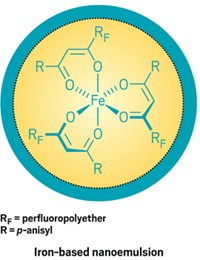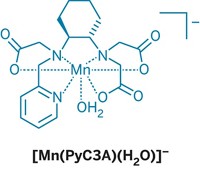Advertisement
Grab your lab coat. Let's get started
Welcome!
Welcome!
Create an account below to get 6 C&EN articles per month, receive newsletters and more - all free.
It seems this is your first time logging in online. Please enter the following information to continue.
As an ACS member you automatically get access to this site. All we need is few more details to create your reading experience.
Not you? Sign in with a different account.
Not you? Sign in with a different account.
ERROR 1
ERROR 1
ERROR 2
ERROR 2
ERROR 2
ERROR 2
ERROR 2
Password and Confirm password must match.
If you have an ACS member number, please enter it here so we can link this account to your membership. (optional)
ERROR 2
ACS values your privacy. By submitting your information, you are gaining access to C&EN and subscribing to our weekly newsletter. We use the information you provide to make your reading experience better, and we will never sell your data to third party members.
Analytical Chemistry
Can You See Me Now?
Cell-permeable MRI contrast agent gives scientists a new view inside cells
AMANDA YARNELL
March 23, 2004
| A version of this story appeared in
Volume 82, Issue 13
A new cell-permeable metal complex synthesized by chemists at Northwestern University should allow biologists to use magnetic resonance imaging (MRI) to observe the environment inside living cells.
Physicians commonly use MRI to obtain anatomical pictures of patients' tissues and organs to make medical diagnoses. The noninvasive, three-dimensional imaging technique could be a boon to biologists seeking to see the inner workings of living cells, too. But MRI's potential as a laboratory tool has been hampered by the lack of cell-permeable versions of the required contrast agents.<br >
MRI images are built from the nuclear magnetic resonance (NMR) signals from water molecules' protons. In medical MRI, contrast agents—normally organometallic complexes containing a paramagnetic metal ion like gadolinium (III)—are used to enhance these intrinsic signals to obtain a better image. But the currently available medical contrast agents can't pass through cell membranes, making them useless to biologists hoping to use MRI to investigate cellular physiology.
The Northwestern team's new cell-permeable Gd(III) contrast agent (shown) should open the door to such cellular imaging applications. The team, which included chemistry professor Thomas J. Meade and former graduate student Matthew J. Allen, has synthesized a metal complex featuring a membrane-permeable polyarginine oligomer attached to a cage that coordinates a Gd(III) ion [Chem. & Biol. 11, 301 (2004)]. The researchers demonstrate that the polyarginine-containing contrast agent can be transported into a number of different cultured cells. Although the details of how such transport takes place remain fuzzy, Meade's team reports that cells treated with the compound show increased contrast in an MRI image. The study should open the door to using MRI to monitor biological processes inside cells, they say.








Join the conversation
Contact the reporter
Submit a Letter to the Editor for publication
Engage with us on Twitter